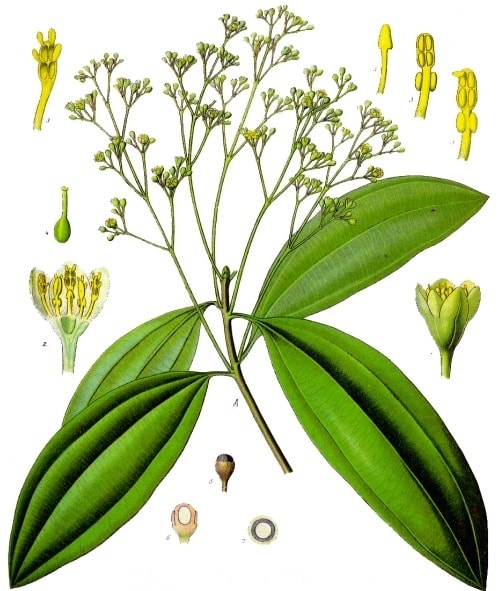Cinnamon and Cinnamon Bark(Cassia) belong to the same plant family and can be considered different plant varieties of different origins.
But, they still are different,
What is the difference between cinnamon and cinnamon bark?
Cinnamaldehyde
Cinnamon Bark(Cassia) has a higher content of cinnamaldehyde(85%), which is the most important value of cinnamon-based essential oils.
The characteristic of cinnamaldehyde is that although it is a strong skin irritant, its powerful antibacterial power is probably the “number one seed player” in essential oils.
Phenols
The higher content of phenols(30%) in Cinnamon also determines a more delicate and agreeable aromatic smell, a little milder than Cinnamon Bark(Cassia).
Phenols also have a strong bactericidal and antiviral ability, second only to cinnamaldehyde.
However, phenols can cause side effects to the liver when taken orally for a long time (more than 4 weeks).
Coumarin
Cinnamon Bark(Cassia) contains coumarin while cinnamon does not, but in smaller amounts.
Coumarin is often considered a bad chemical, it makes the skin more sensitive to UV rays, and if the skin is coated with this type of essential oil and exposed to sunlight.
It can lead to severe sunburn and tanning, also known as photosensitivity. (For example, ginger and citrus essential oils such as lemon, bergamot, and wild orange are contained in.)
Comparison sheet: Cinnamon vs Cinnamon bark
| Items | Cinnamon | Cinnamon Bark(Cassia) |
|---|---|---|
| Common Name | Cinnamon | Cinnamon Bark |
| Latin name | Cinnamomum zeylanicum | Cinnamomum cassia |
| Essential Oil | Cinnamon oil | Cassia oil |
| Plant family | Laurel, family Camphoraceae | Laurel, family Camphoraceae |
| Extraction area | Tree bark | Tree bark |
| Origin | Indonesia, Sri Lanka | China |
| Main chemical composition | Cinnamaldehyde(50%), Phenols(30%), Hydroxycinnamaldehyde | Cinnamaldehyde(85%), Phenols(7%), Benzaldehyde |
| Other composition difference | Without Coumarin | Contains Coumarin |
| Skin irritation | Extremely strong | Extremely strong |

Common uses for cinnamon and cinnamon bark
It has strong bactericidal, antifungal, and antiviral abilities, with broad-spectrum antibacterial efficacy.
- Can be made into cleaning products with bactericidal effects of up to 90%.
- Diarrhea, enteritis, dysentery, parasitic infections.
- Severe skin infections, ulcers, and inflammation can be considered.
- Gynecological inflammation.
Cinnamon essential oil is contained in our commonly used defense compound.
- Warms repel cold, promote blood circulation, and boosts immunity.
- It can be used to regulate diabetes and prostate disease.
- Boosts male sexual function.
Considerations for using cinnamon or cinnamon bark oils
Both cinnamon and cinnamon bark is extremely irritating when used for skin application and must be used with care and caution. A dilution ratio of 10 times or more is recommended.
Because of its irritating properties, it is better to mix it with other essential oils rather than use it alone.
Not recommended for use during pregnancy, breastfeeding, infants and children.
What is our advice about using cinnamon or cinnamon bark oils?
The difference in price between cinnamon and cinnamon is 3 times. There may be various cost factors in this and it is not considered to be a true reflection of their value.
If used as a seasoning for cooking, then cinnamon should be more appropriate.
If it is to be used for its antimicrobial power to make a disinfectant, cinnamon is more economical.
If one is looking for richness in potency, Cinnamon Bark(Cassia) oil is clearly slightly superior.
